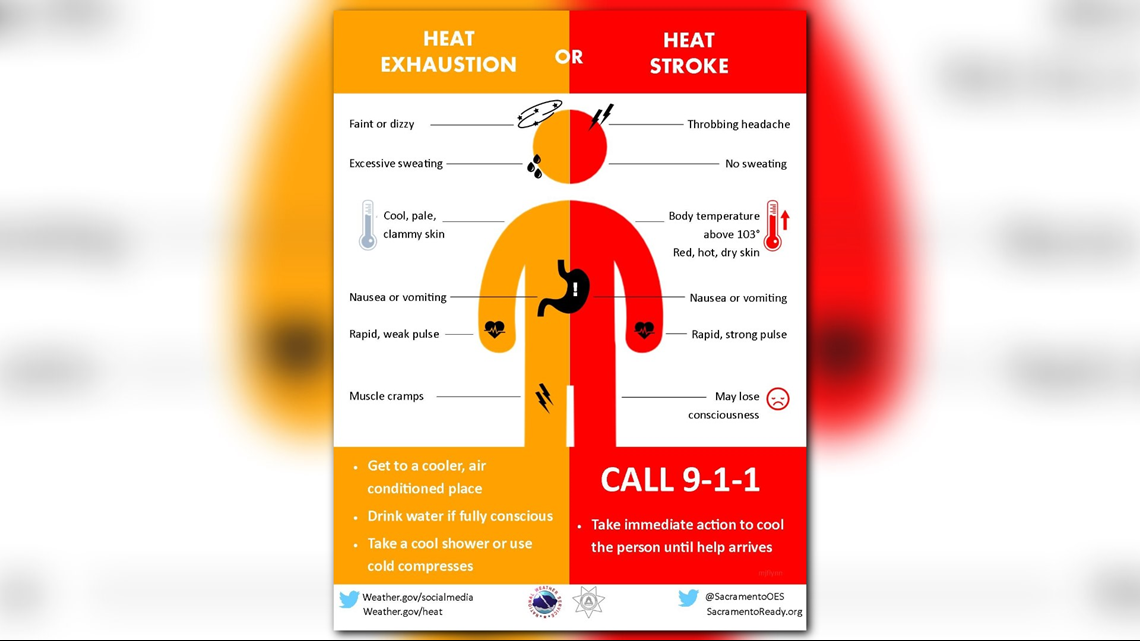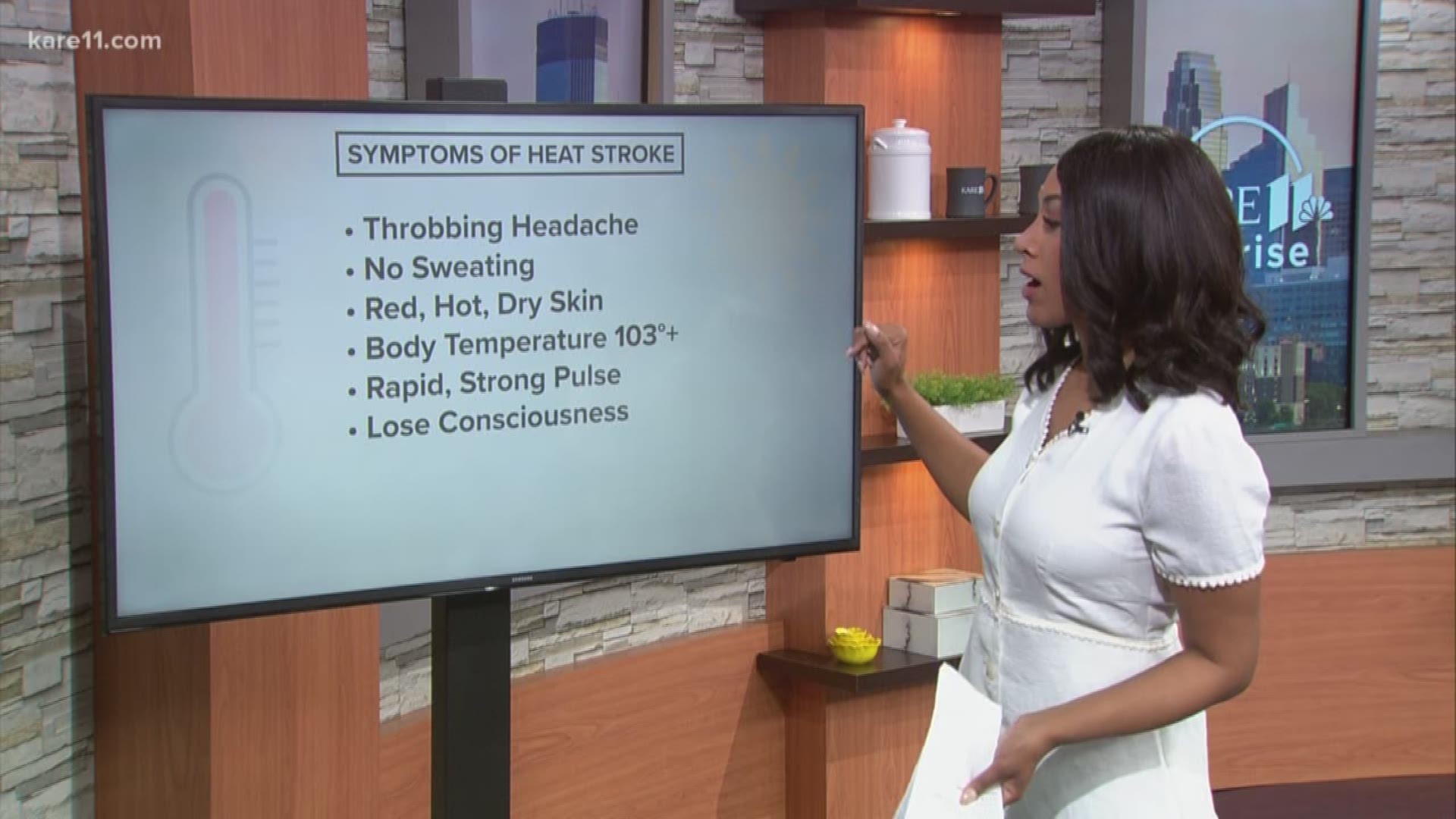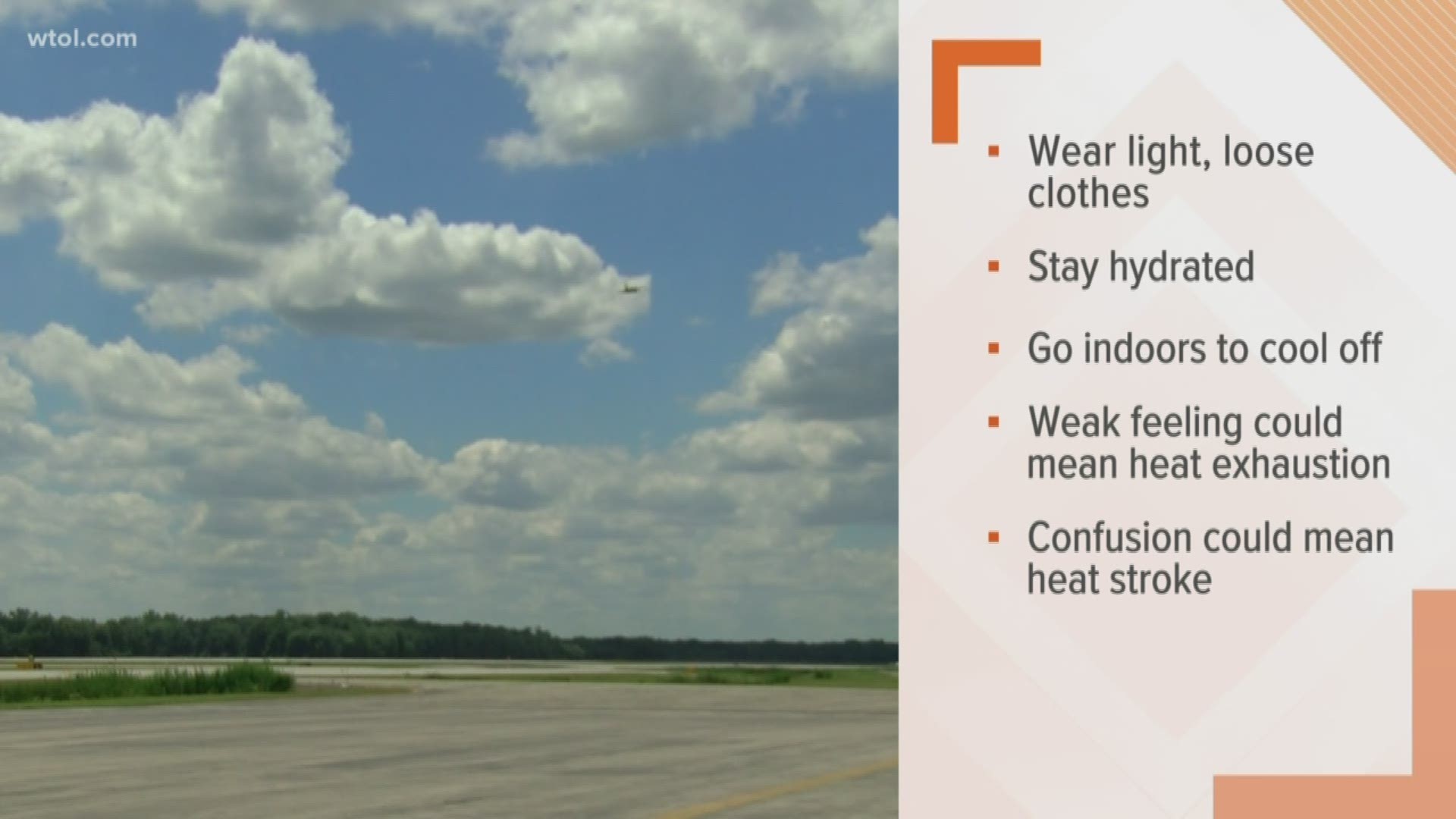We are on the edge of potentially dangerous mid-July heat wave. Your First Alert meteorologists stress that the heat index could reach 110 degrees on back to back days Friday and Saturday. This heat in incredibly rare and very dangerous.
You'll want to stay hydrated and cool throughout this heat wave and recognize early symptoms of heat stress to avoid heat-related dangers.
Drinking enough water and having enough electrolytes is necessary for our bodies to function properly. This is why it is so important to stay hydrated; a dehydrated person is likely to start having symptoms of heat illness.
The Toledo-Lucas County Health Department has several tips to know what is heat exhaustion and what is stroke. Heat exhaustion is serious, while heat stroke is life threatening:
Know the Signs of Heat Exhaustion (serious)
• Heavy sweating, nausea or vomiting, muscle cramps, dizziness, headache,
and cold, pale, or clammy skin are all associated signs of heat exhaustion.
• People experiencing heat should move to a cool place, loosen clothes, sip
water, and put cool cloths on their body.
• Medical help should be contacted if the individual is throwing up, symptoms
are worsening and/or lasting longer than 1 hour.
Know the Signs of Heat Stroke (life-threatening)
• Heat stroke is a potentially life-threatening condition, characterized by a
body temperature of 103 degrees or higher; red, hot and dry skin with no
sweating; rapid pulse; headache; dizziness; nausea; confusion;
unconsciousness; and gray skin color.
• People experiencing heat stroke need immediate medical assistance – call
911.
• Before help arrives, begin cooling the victim by any means possible, such as
spray from a garden hose or by placing the person in a cool tub of water.


If you have to work outside, the National Institute for Occupational Safety and Health recommends that for moderate activity in moderate conditions, each worker should drink 1 cup of water every 15 to 20 minutes. Workers should be reminded to drink water frequently before becoming thirsty in order to maintain good hydration. While some workers may prefer the taste of sports drinks, often these types of drinks are not necessary for electrolyte replacement.
NIOSH also recommends taking regular rest breaks. Breaks should be held in a shaded or air conditioned area. Employers and supervisors should be monitoring weather reports daily, and if possible, jobs with high heat exposure should be rescheduled to cooler times of the day. The use of reflective clothing, water-dampened cotton clothing (although this may not work when the humidity is very high), and cooling vests with pockets for cold packs may also be beneficial for keeping workers not only cooler for longer periods of time, but also safer.


